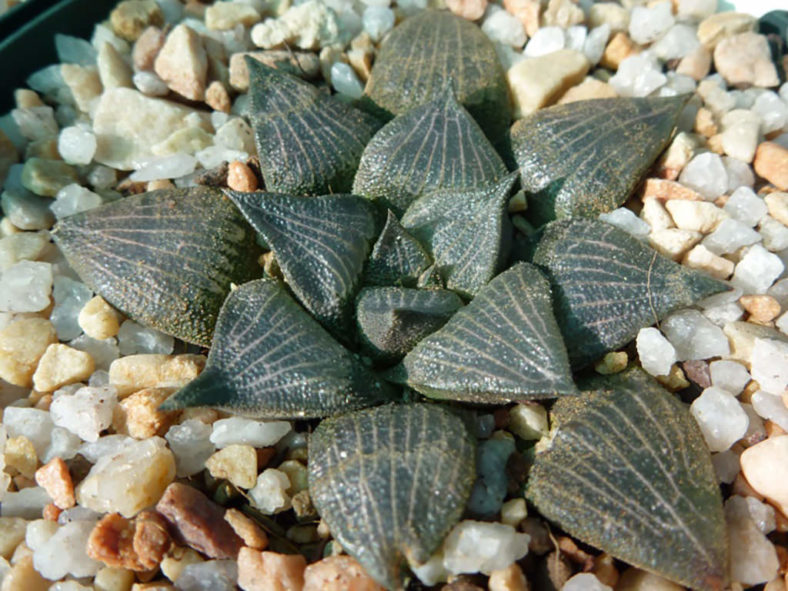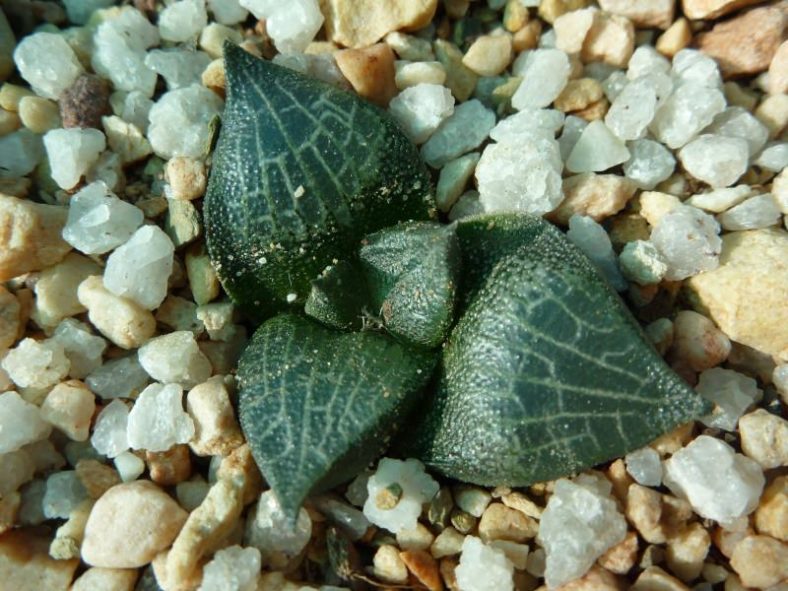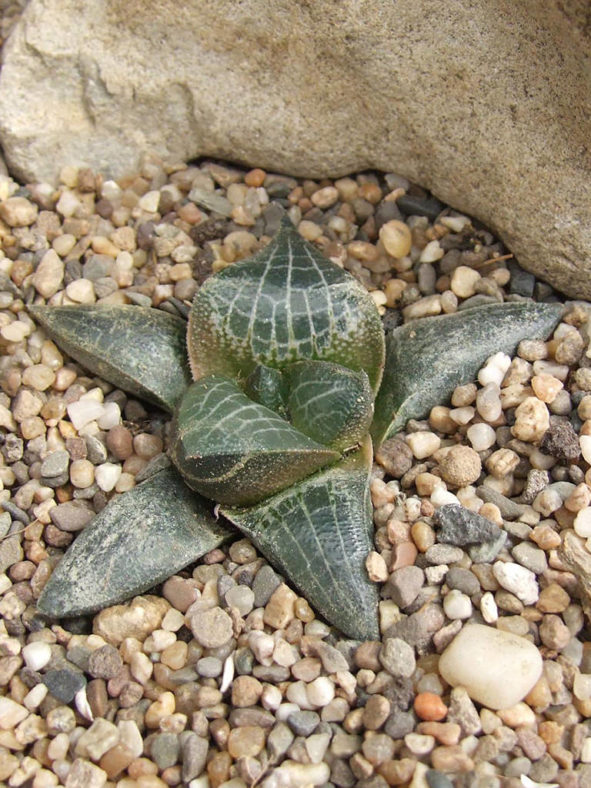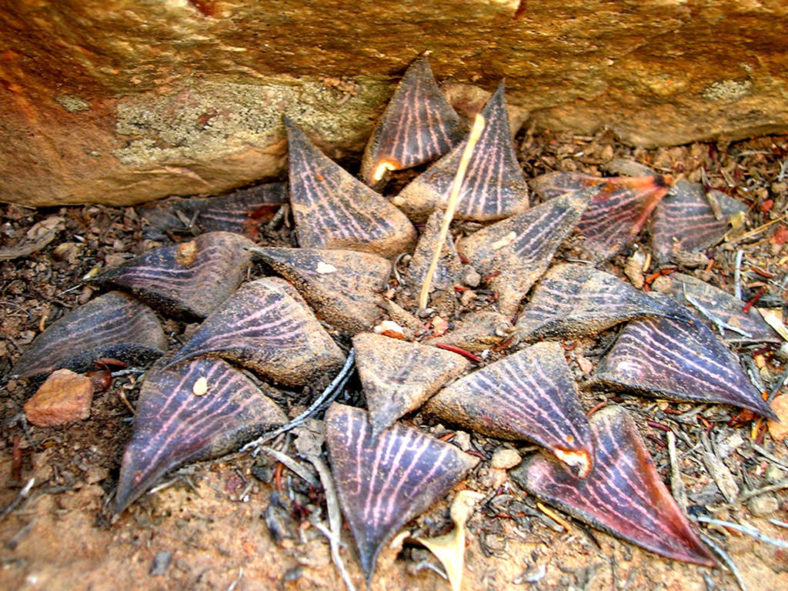Scientific Name
Haworthia marxii Gildenh.
Accepted Scientific Name
Haworthia emelyae Poelln.
Scientific Classification
Family: Asphodelaceae
Subfamily: Asphodeloideae
Tribe: Aloeae
Genus: Haworthia
Etymology
The specific epithet "marxii (MARKS-ee-eye)" honors Gerhard Marx, a South African artist, author, amateur botanist, and succulent horticulturist.
Origin
Haworthia marxii is native to South Africa. It is restricted to a few steep hill slopes in the Western Cape province near the Rooinek Pass in the Witteberg Mountains, south of Laingsburg. In 2012, Bruce Bayer placed Haworthia marxi under Haworthia emelyae.
Description
Haworthia marxii is a small succulent that forms a solitary, flattened rosette of swollen, very dark-colored leaves with silvery-white longitudinal lines occasionally transversely connected, creating an interesting pattern. The rosette can grow up to 4 inches (10 cm) in diameter. The leaves are slightly scabrid, very dark blue-grey to purplish-black, mostly with small scattered silvery-white flecks between the lines, and occasionally the lines have opaque black flecks inside them. They are semi-erect and triangular when young, later spreading, recurved, becoming rather flat and keeled only near the tip, ending in an acuminate tip.
The white flowers with dull green central nerve appear in summer and can reach up to 0.6 inches (1.5 cm) in length. They are spirally arranged in a solitary, slender raceme that can grow up to 2 feet (60 cm) long, including the peduncle.

How to Grow and Care for Haworthia marxii
Light: Place the potted plant in a bright area with some protection from the hottest rays of the day. White, yellow, or red-tinged leaves usually indicate that your H. marxii receives too much sunlight. Deep shade tends to weaken the plant over a prolonged period. If your plant has spent the winter indoors, gradually move it outdoors into the bright sun to prevent sunburn.
Soil: Like all Haworthias, this plant does not like its roots to remain wet for prolonged periods, so the soil should be well-drained. Use a commercial potting mix for succulents, or make your own.
Temperature: This succulent likes warmer temperatures in the summer but cool in the winter. However, it does not like being too cold. H. marxii can withstand temperatures as low as 30 °F (-1.1 °C). USDA Plant Hardiness Zones 10a to 11b, 30 to 50 °F (-1.1 to 10 °C).
Watering: In spring and fall, when the growth is most active, water H. marxii thoroughly, then wait until the top of the soil dries out before watering again. Water your plant less during the winter when its growth slows down significantly. When this plant is mostly dormant during the hottest summer months, water it just enough to keep the leaves from shriveling.
Fertilizing: H. marxii does not require much fertilizer. However, for optimum growth, fertilizing is a good idea. Feed only with a dilute fertilizer and only during the active growing season.
Repotting: This slow-growing succulent can stay in the same pot for years. To keep your plant healthy and happy, repot H. marxii into fresh soil every two to three years in spring or fall. Repotting time is also the time to take offsets for propagation.
Propagation: Since a plant with a solitary growth habit, H. marxii can be propagated only from seeds. Sow seeds in spring or fall in a well-draining soil mix.
Learn more at How to Grow and Care for Haworthia.
Toxicity of Haworthia marxii
H. marxii is considered non-toxic to humans and animals.
Links
- Back to genus Haworthia
- Succupedia: Browse succulents by Scientific Name, Common Name, Genus, Family, USDA Hardiness Zone, Origin, or cacti by Genus
Photo Gallery
Click on a photo to see a larger version.


